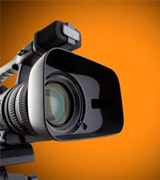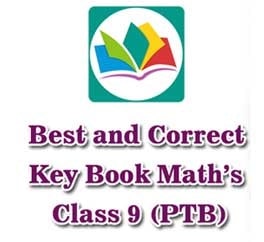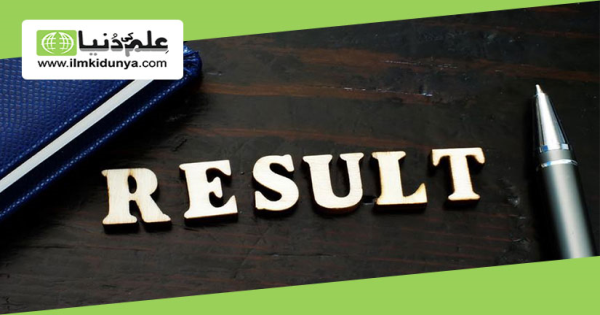Following are the most important advantages of a good cost accounting system:
- Classification and Subdivision of Costs:
In the contrast to a single profit or loss figure supplied by general accounting, the cost accounting classifies costs and income by every conceivable subdivision of the business enterprise. In a good costing system data regarding costs by departments, processes, functions, products, orders, jobs, contracts and services can easily computed. This detailed cost information for managerial control is one of the most important contributions of cost accounting. - Adequacy or Inadequacy of Selling Prices:
Unit cost of production, administration and safe made possible by cost accounting aids management in deciding the adequacy or inadequacy of selling prices i.e. neither too high detracting business, nor too low resulting in losses to the concern.
In period of depressions, slumps, or in case of competition management forced to lower prices even below cost of production and sale. In such circumstances, cost accounting will help management in deciding the proper reduction. - Disclosure of profitable Products:
Cost Accounting will disclose activities, departments, products and territories, which bring profit and those that result in losses. Management to determine what products because of profit margin the sales department because of their greater profit margin should emphasize will use this information. What products arte unprofitable or less profitable and might be eliminated or lesser sales pressure be given to them. What activities or territories are not producing sufficient profit and should be either further improved or eliminated and what methods of production and distribution are most profitable for the firm. This will increase the overall profit of the concern. - Control of Material and Supplies:
In a good costing system materials and supplies must be accounted for in terms of departments, jobs, units of production or service. This will eliminate altogether or reduce to the minimum misappropriations, embezzlements, deterioration, obsolescence, and losses from defective, spoiled, scrap and out of date materials and supplies. - Maintenance of Proper Investment in Inventories:
A costing system will help in the maintenance of various inventory items of materials and supplies in line with production and sale requirements. If these quantities are too small, production may stop or sales may be lost. On the other hand, if quantities of such materials and supplies are in excess of the production and sales requirements, too much working capital may unnecessarily tie up in inventories. The detailed quantity information furnished by the cost accountant at all times will go a long way in reducing or eliminating this possibility. - Correct Valuation of Inventories:
Cost Accounting plays a basic role in the correct valuation of inventories of finished goods, work in process, materials and supplies. The book inventory method (as opposed to physical inventory method) made possible by cost accounting system will involve the operation of the various inventory control accounts in such a manner that the balances of these accounts well be inventory valuations required for periodic financial statements. This enables the preparation of monthly financial statements without the trouble and expense of taking monthly physical inventories.
Further, the value of inventories shown by the book inventory will be more accurate than inventory values shown by the physical inventory method. If no cost system is in use and inventory values computed by physical inventory method, then the value of these inventories must either bean estimate of cost or be determined at market values. But in a cost accounting system accurate procedures and techniques are available by which inventory values can be computed in a relatively more exact fashion. The requirements of management, stockholders, creditors, employees and other groups interested in the financial statements of the firm naturally attach more emphasis on this objective of cost accounting. In most cases, this objective of cost accounting dominates the formal cost records and routines.
- Whether to Manufacture or Purchase from Outsiders:
Cost records furnish information regarding the cost of manufacturing of different finished parts, which assist management in making a decision whether to purchase these parts from outside manufacturers or manufacture them in the factory. - Control of Labour Cost:
Orders, jobs, contracts, departments, processes, or services record cost of labour. In many manufacturing enterprises, daily time reports are prepared showing the number of hours and minutes spent and the wage rate for each worker per job or operation. This enables management to compare the current cost of labour per job or operation with some previously incurred or determined cost thus measuring the efficiency or inefficiency of the labour force and assigning the work to employees best suited for it. - Use of Company-wide Wage Incentive Plans:
When labour cost is accounted for by jobs and operations, it is possible to use effectively wage incentive plans or bonus schemes for the remuneration of labour force. Carefully planned and administered incentive schemes are an effective means of enforcing superior performance and cost reduction. Workers are more co-operative, responsive and productive when some form of incentive offered to them for surpassing stipulated standards of perfection and performance. Cost of accounting has developed incentive plans, which are applicable not only to factory workers but also to clerks, salespersons, and other executives for above standard performance. - Controllable and Uncontrollable Cost:
Cost accounting exhibits at each stage of production and sale the controllable and uncontrollable items in the manufacturing, selling and administrative cost thus enabling management to concentrate attention on those costs, which can reduced of, eliminated. There is very little the management can do to reduce such uncontrollable items as idle time of machines and labour, wastage in the use of materials, supplies and power can controlled much more effectively. - Use of Standards for Measuring Efficiency:
A complete cost accounting system, generally, has a well-developed plan of standards to measure the efficiency of the organization in the use of materials, incurrence of labour and other manufacturing cost. Cora does this appraisal paring the work of factory workers, office and sales personnel and other executive with what should have done in manufacturing and selling a given quantity of units in a given period. - Reduction of Losses Due to Seasonal Conditions:
Cost accounting provides data for making a complete analysis of losses due to idle plant and equipment or due to the use of plant and equipment beyond normal capacity, irregular employment of labour, wastes in the use of materials. It indicates cost variations between active and inactive periods and seasonal conditions in the business or industry. Seasonal fluctuations in business activity affect profoundly the earnings of the concern. In many industries, seasonal variations are responsible for higher costs and lower profits. - Budgeting:
In a good cost accounting system, preparation of various budgets periods in advance of actual production and sale of goods is necessary. These budgets include budgeted statement of profits, budgeted cost of plant improvements, budgeted cost of production, budgeted cash receipts and payments, and so forth. These budgets show the plans of the management for future periods and they reflect the expected results of these plans. They are of great help in getting the sales manager, the works manager, and the treasurer into agreement as to a plan that can sold, manufactured and financed. In fact, the use of budgets has made costing a preventive device for the rectification of inefficiencies before they creep into the business operations or as they occur from day to day. In other words, budgeting, inculcates the habit of thinking and calculations before taking decisions. - Reliable Check on General Accounting:
Finally, an efficient and proper system of cost accounting is a most reliable and independent check on the accuracy of the financial accounts. This check made effective through reconciliation of the balance of profit or loss shown by the costing profit and loss account and the balance of profit of profit or loss revealed by the general accounting profit and loss account.
Aleem Ahmed Qureshi
Top Contributors
Related Articles
Muneeb Ahmed serves as the Director of CMACED- Centre for Entrepreneurship Development
- Ilmkidunya
- 10/Apr/2025
Strategies to Improve Computer Security for Small Businesses | Effective Cybersecurity Practices
- Ilmkidunya
- 07/Apr/2025
Former Provincial Minister Ibrahim Murad’s Efforts Boost Pakistan’s Meat Exports by 55% to $431M in 9 Months
- Team Ilmkidunya
- 24/May/2024




.gif)







































